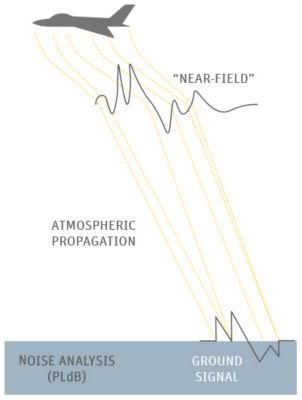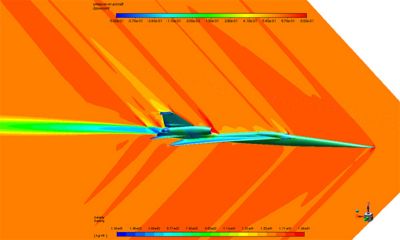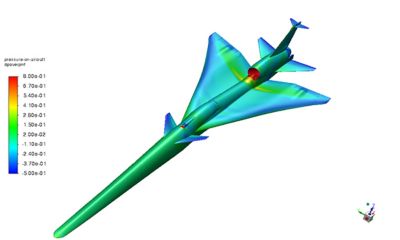-
-
학생용 무료 소프트웨어에 액세스하기
차세대 엔지니어에게 힘을 실어주는 Ansys
학생들은 세계적 수준의 시뮬레이션 소프트웨어를 무료로 이용할 수 있습니다.
-
지금 바로 Ansys에 연결하십시오!
미래를 설계하기
시뮬레이션이 다음 혁신을 어떻게 지원할 수 있는지 알아보려면 Ansys와 연결하십시오.
국가
무료 트라이얼
제품 및 서비스
학습하기
회사 정보
Back
제품 및 서비스
ANSYS BLOG
January 17, 2020
What Happens When Experts Silence Supersonic Flights?
One of the biggest limitations of supersonic flight is the deafening sound of a sonic boom that follows a flyover.
In fact, one of the major barriers to the Concorde was the prohibition of it flying over populated areas. It's a shame because it almost cut flight-time in half — traveling from New York to London in 3.5 hours.
Engineers are using simulations to help make commercial supersonic travel viable again through a certification process. The idea is to create planes that surpass the sound barrier without waking up the neighborhood.
Diagram of the propagation of a sonic boom
To do this, engineers need to perform a nearfield computational fluid dynamics (CFD) analysis to predict the sounds created by the pressure buildup of the aircraft’s flight.
They then need to compare and investigate the propagation, volume, grid refinements and statistics of the noise as it travels to the ground.
How Engineers Are Reducing Sonic Booms
Ansys is working with NASA and the American Institute of Aeronautics and Astronautics (AIAA) to refine the classic aircraft shape, and its simulation mesh, with the goal of making supersonic flight easy on the ears.
Simulation of the pressure wave during a supersonic flight
Ideally, these designs should have a perceived level in decibels (PLdB) under 75 PLdB. PLdB are different than traditional decibels (dB) because they are dependent on a sound’s frequency. They are often noted as a sound’s noisiness — think of how a human perceives nails on a chalk board to be noisier than classical music, even if they are at the same volume.
At a series of workshops at AIAA SciTech 2020, the group examined and discussed pressure signal simulation results around an X-59 design candidate. This design spreads out the pressure shockwave, so it doesn’t coalesce into a “boom.”
The current design looks like it may achieve the 75 PLdB requirement, but further airframe optimization is possible with adjoint solvers.
Will Aircraft Fly Faster Than Sound Without Sonic Booms?
If this technology is adopted it will likely start with business jets as they cater to early adopters. Additionally, the small size of the aircraft makes it easier to silence the noise.
As simulation tools reduce the development times of larger aircraft, low-boom technology could be adapted for long-haul flights and public travel within a decade.
Simulation of a concept plane capable of low-boom flight
If all goes well, a business-sized commercial jet could fly over cities while producing a sonic boom comparable to the sound of a car door slamming in a parking lot.
To learn more, watch the webinar: Accurate Prediction of Panel Flutter Applicable to Supersonic or High Lift Flight: Results and Comparison to NASA Wind Tunnel Data.


